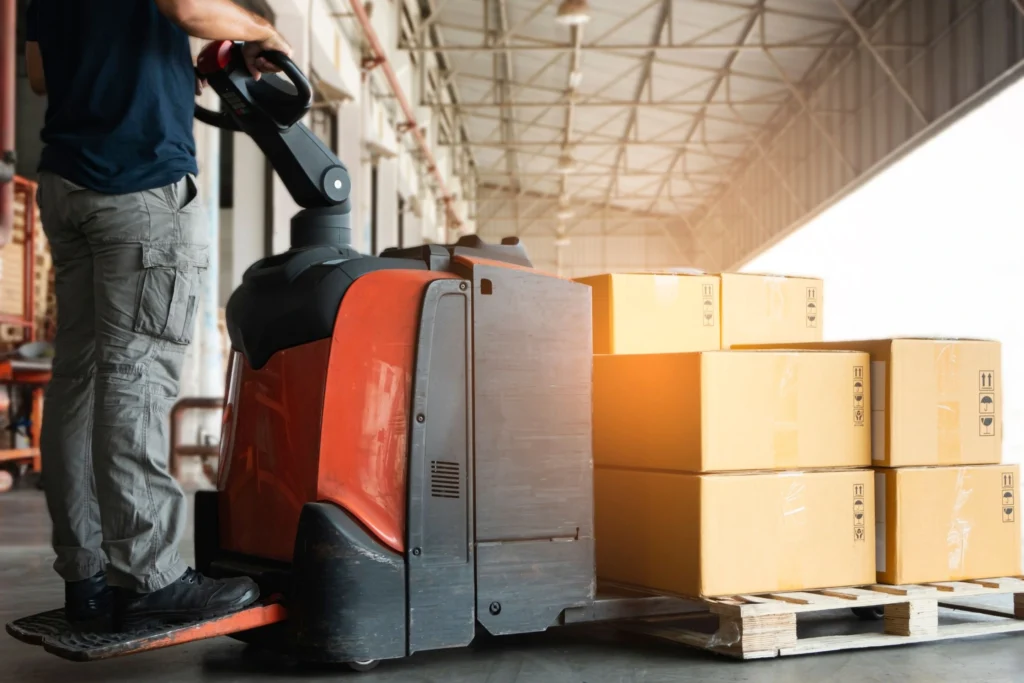INTRODUCTION FOR SAFETY IN HANDLING FORKLIFT, REACH TRUCK AND PALLET JACK TRAINING
Material handling equipment like forklifts, reach trucks, and pallet jacks play a crucial role in warehouse and industrial operations. However, improper use of this equipment poses serious safety risks including injuries, property damage, and operational downtime. This 2-day safety training program is designed to provide participants with the knowledge and practical skills needed to operate these machines safely and efficiently.
Participants will be guided through comprehensive theoretical concepts and hands-on sessions, aligned with safety regulations and best practices. The training focuses on safe operating procedures, hazard recognition, risk reduction, and emergency response related to material handling equipment.
KNOWLEDGE OBJECTIVES
- Understand the functions and differences between forklifts, reach trucks, and pallet jacks.
- Recognize common workplace hazards related to material handling equipment.
- Describe safety rules and operational guidelines as per OSHA/local standards.
- Identify and perform pre-operational checks for each type of equipment.
- Understand load handling principles, including stability, centre of gravity, and load limits.
SKILL OBJECTIVES
- Demonstrate safe driving techniques for forklifts, reach trucks, and pallet jacks.
- Perform proper lifting, stacking, and manoeuvring procedures.
- Apply correct shutdown and parking procedures.
- Respond appropriately to equipment malfunctions and emergency situations.
- Conduct inspections and identify unsafe conditions or mechanical issues.
ATTITUDE OBJECTIVES
- Appreciate the importance of safety in material handling.
- Promote a safety-first mindset in daily operations.
- Take personal responsibility for safe equipment handling.
- Behaviour Based Safety
COURSE CONTENT
Day 1 – Training Outline
-
Introduction to Material Handling Equipment
- Types: Forklift, Reach Truck, Pallet Jack
- Differences and appropriate applications
- OSHA/Local regulations overview
-
General Safety Guidelines
- Pre-operational inspections
- Hazard identification (pedestrians, obstructions, slopes)
- Safe speeds and operating distances
- Load handling basics
- PPE requirements
-
Forklift Specific Training
- Components and controls
- Stability triangle and centre of gravity
- Lifting and transporting loads
- Parking and shutdown procedures
- Break (10:30 AM – 10:45 AM)
-
Reach Truck Specific Training
- Design and manoeuvrability
- Narrow aisle operations
- Load handling at height
- Visibility and blind spot awareness
-
Pallet Jack (Manual & Electric)
- Operating procedures
- Load limitations
- Safe pushing/pulling techniques
- Charging (for electric models)
- Lunch (12:30 PM – 1:30 PM)
-
Workplace Hazards & Risk Management
- Dock safety
- Ramps and elevators
- Stacking/staging practices
- Battery handling and charging safety
- Tea Break (3:00 PM – 3:15 PM)
-
Emergency Procedures
- Equipment failure
- Evacuation drills
- Incident reporting
Day 2: Training Outline
-
Pre-Operational Inspection Practice
- Checklist walkthrough
- Reporting defects
-
Forklift Hands-On Practice
- Mounting/dismounting
- Driving with/without loads
- Lifting/lowering/staging loads
- Parking and shutdown
- Tea Break (10:30 AM – 10:45 AM)
-
Reach Truck Hands-On Practice
- Operating in confined spaces
- Picking/dropping loads at height
- Reverse operation and turning radius control
- Lunch (12:30 PM – 1:30 PM)
-
Pallet Jack Hands-On Practice
- Manoeuvring through obstacles
- Loading/unloading pallets safely
- Safe transport of loads
- Tea Break (3:00 PM – 3:15 PM)
-
Final Evaluation
- Post-Test
- Practical Assessment (Each participant operates all 3 equipment types)


